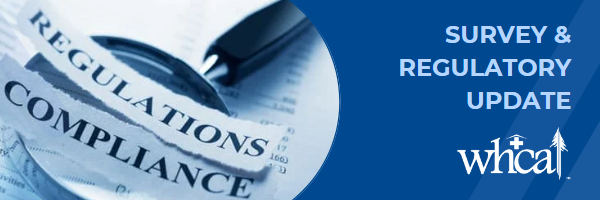Oct 17 2025 | Resident Abuse
Allegations of resident abuse cause significant alarm for residents, staff, and families. First and foremost, acknowledging the trauma and effects of abuse to the victim and their loved ones, it is also important to understand the effects that are not commonly discussed. With the potential for severe legal consequences and media spotlights, the abuse of a resident can impact a facility’s operations and reputation, potentially long-term. While facility operators build and implement systems to keep residents safe from abuse, even one abuse claim can result in huge impacts on residents and operators alike.
Resident abuse claims are infrequent: in skilled nursing facilities they make up only 3.2% of all claims, while in assisted living that number is higher, at 8%. While the percentages are low, the payouts have grown significantly when compared to the 2021 report: 45.7% increase in skilled nursing (from $257,524 to $375,338) and a 17.3% climb in assisted living (from $337,892 to $396,263).
From a risk management standpoint, resident abuse continues as the highest in severity of all allegations, with an average claim’s payout of $384,088 (combined skilled nursing and assisted living abuse claims payouts).
The CNA report includes recommendations for facility leadership and staff to minimize resident abuse. Those risk management recommendations include:
COMPREHENSIVE RESIDENT ASSESSMENT/EVALUATION
Perform and document an assessment/evaluation prior to admission to ensure identified resident behaviors can be managed by facility staff.
CARE/SERVICE PLAN DEVELOPMENT AND IMPLEMENTATION
Develop and implement a care/service plan that is specific to the resident’s behavior(s). Include interventions including identifying triggers that lead to behaviors, redirection methods, activities, and medication.
DOCUMENTATION
Document ongoing monitoring and evaluation of the resident’s behavior, along with observations and the response to interventions. Changes in behavior should be documented and reported to family and the resident’s health care provider, with adjustments made to the care/service plan as necessary.
COMMUNICATION
Encourage open communication and collaboration amongst staff, residents, and families; this can help ensure all aspects of care are addressed and expectations are understood. Create an environment where staff who might feel overwhelmed or otherwise stressed can communicate with one another, and shared work can minimize staff burnout.
COMPREHENSIVE TRAINING AND EDUCATION
Provide all staff with education on common resident behaviors, effective communication techniques, and strategies for responding effectively to challenging behaviors. Offer specific training on recognizing and reporting signs of abuse including physical, verbal, emotional/mental, sexual, and financial abuse as well as neglect. Incorporate training on ethical standards, empathy, and maintaining professional boundaries as they relate to staff-resident relationships.
REGULAR SUPERVISION AND OVERSIGHT
Set expectations and follow through on supervisors observing staff interactions with residents. Provide feedback and address any concerns immediately. Conduct unannounced spot checks to ensure staff follow policies and protocols related to resident care and safety. Foster an environment where staff feel comfortable promptly reporting concerns or instances of abuse without fear of retaliation.
STRENGTHEN HIRING PRACTICES
Screen potential employees rigorously, including background checks, reference checks, and previous work experience. Prioritize candidates who demonstrate empathy, patience, and genuine commitment to the well-being of residents.
PROMOTE A CULTURE OF RESPECT AND DIGNITY
Establish and enforce a zero-tolerance policy for abuse of any kind. Encourage and celebrate staff who treat residents with kindness, dignity, and compassion. Create an opportunity for residents to provide feedback and participate in decision-making processes regarding their care; this empowers them to advocate for themselves and voice any concerns. Take any allegations of abuse seriously; if staff, residents, or visitors share concerns be sure to investigate and follow up with findings and proposed resolution.
INCIDENT REPORTING AND INVESTIGATION
Develop clear, easy-to-access and easy-to-follow protocols for reporting suspected abuse, including procedures for documenting incidents, conducting investigations, and involving appropriate authorities when necessary. Ensure all staff know their responsibility to promptly report any concerns or allegations of resident abuse, whether that involves other staff, residents, or visitors. Establish mechanisms to support victims and witnesses of abuse through access to counseling services and critical incident debriefings.
TRACKING/TRENDING
Track, trend, and analyze behavior data to determine patterns and the outcome of interventions. Include a review of data during quality assurance/performance improvement meetings.

Next month, we will cover risk management recommendations associated with resident pressure injuries. For questions about this series, please email Elena Madrid (for skilled nursing facility members) or Vicki McNealley (for assisted living facility members).

